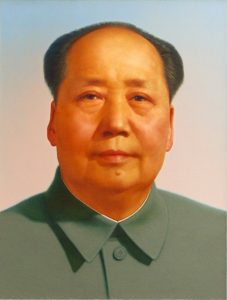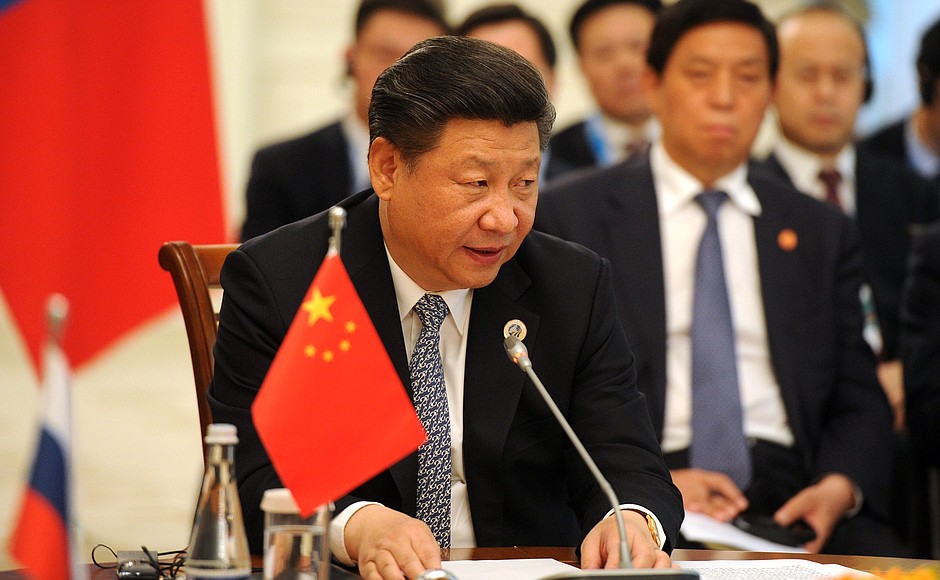Chinese communism or socialism represents the socialist ideologies with capitalist’s activities and this is also a debatable topic. The history of Chinese communism goes back to the era of revolution. So we have to go back to the time to explore the facts and nature of Chinese communism. Chinese Communist Party considered as both a political and revolutionary movement initiator was found in 1921 by the revolutionaries such as Li Dazhao and Chen Duxiu. In the turmoil of 1920s, China CP member’s including Mao Zedong, Liu Shaoqi and Li Lisan began organizing labour unions in the cities and joined Nationalist party in 1924. But in 1927 the nationalist party under the leadership of Chiang Kai-Shek communists were ousted violently from the party and Shanghai as well. That results in the communists to go underground. They went back to countryside’s and formed Chinese Soviet nexus with a population of some 10 million in southern China in 1931. But that entity soon destroyed and Mao and the remnants of his force escaped in the long march (1934-35) to Yan’an in northern China.
The Kuomintang-led government of the Republic of China and Communist Party of China were the parties of Chinese civil war. The war started in 1927 and ended in 1950 with two de facto states The Republic of China in Taiwan and The People’s Republic of China in mainland China, both claiming legitimate government.
read China’s One belt One Road Project
Socialist transformation under Mao Zedong (1949-1976):
After establishing the Chinese Peoples Republic, Mao wanted to transform the structure of the country and initiated a series of programs. That includes a series of sweeping, convulsive campaigns to transform a semi-feudal largely illiterate and predominantly agricultural country into a modern, industrialized socialist state. Mao considered as a great leader of communist China and by the time of his death china had manufactured its own nuclear bombs and guided missiles and had become a major oil producer also. He also charted a new course in foreign affairs with the initiative of putting an end to a century of humiliation under the unequal treaties imposed by the west. His initiatives to reform Chinese structure of economy includes great leap forward under the first five years plan of new communist China. In early 1958 this initiative was taken that was not merely a bold economic project intended to show the Soviet Union that the Chinese approach to economic development was more vibrant and it would be more successful, than the Soviet model that had been followed seriously until then. The great leap forward was accompanied by a concentrated propaganda effort. It took two forms:
- A mass steel campaign and the formation of the people’s communes.
- All the peoples of the country were organized to help produce the amount of steel that was needed to attain the goal of surpassing England. Life was materialized for this battle for steel.
But unfortunately this mass produced peoples steel was so poor and could not be used, this production battle disrupted the economy. By early 1959, as a result of the massive production drives in steel and agriculture, both the production and transport sectors had become severely dislocated. The Birth rate was nearly cut in half because of malnutrition by the end of 1961.
Another reform of Mao began in May 1966 that is also known as Cultural Revolution. Almost all the aspects of Chinese life were affected by this campaign. Mao’s Cultural Revolution call was answered by the students, some as young as elementary school, who organized themselves into the first groups of Red Guards. They were joined later by workers and soldiers.
Influence of Red Guards terrorized activities resulted in ordinary citizens deemed for counter-revolutionary activities. Public transport and education came to a nearly complete halt. This continued between 1966 and 1976, the young people of China rose up in an effort to purge the nation of the “Four Olds”: old customs, old culture, old habits and old ideas. The campaign would not come to a complete end until the death of Mao in 1976.

Economic reforms under Deng Xiaoping (1976–1989):
Like Mao Zedong, Deng Xiaoping was in the small group of revolutionary elders and fought as a guerrilla for the Communist Revolution on 1949. In 1954 Mao appointed him as general secretary of Communist Party. He was dragged down from the power twice as he was blamed a capitalist roader. After Mao’s death he came back to power and in his second resurrection he begins to consolidate his power and in 1978 became China’s paramount leader.
He nourished an economic boom as the earlier era was the devastative era for Chinese economic sector. He nourished an economic boom that radically improved the lives of China’s 1.2 billion citizens.
The era is known as the period of reform and opening. But it was not an easy task to pass the economic reform in communist politburo of China. In 1978 Deng Xiaoping initiated reform described as ‘socialism with Chinese characteristics’ and it is not capitalistic as he said, ‘I have expressed time and again that our modernization is a socialist one.’
The policies also being called radical pragmatism as it set in motion one of the longest sustained economic expansions in history. Another aspect of reform was decentralization of the state economy by replacing central planning with market forces, getting rid of state-run enterprises and breaking down the collective farms. Enterprises and factories were allowed to keep the profit, giving merit pay and bonuses to employees and that greatly boosted productivity.
The shift from heavy industries to consumer-oriented industries and initiatives for foreign investments were another remarkable aspect of Xiaoping era. The 1978 reforms included efforts to boost foreign trade through the establishment of 12 state companies to control imports and exports and the creation of Special Economic Zones (SEZs) along with China’s southern coastline. Communes began to be dismantled in 1982 and peasants were allowed to grow and sell produce.
Economic growth (1989–2013):
After Deng Xiaoping, Chairman Jiang Zemin continued the process of economic reform and confirm the direction of Chinese development policies like an extension of the market system and greater economic openness as well as measures to limit population growth. Besides, he projected the science and technological growth and improvement of the technologies to compete for the whole world.
In 2002, Jiang Zemin in his report to the 16th Congress of the CCP expressed the facts about growing economic inequality in China and the concerns regarding the matter.
In 2007 next party Chairman Hu Jintao in his report to the 17th Congress of the CCP then confirmed support for continuing earlier economic reforms and he added the necessity of paying more attention to income inequality, approaching technological barriers to China’s continuing development, and environmental and energy issues.
In 2008 like other countries of the world China faced the challenge of the global economic crises and formulated policies to weather the economic storm. This has been described as “China’s greatest crisis since its reforms 30 years ago”. In 2009 the signs of economic recovery have been shown as a result of the governmental intervention.
read Independence of Catalonia: will it get out of control?
China under Xi Jinping:
Xi Jinping becomes China’s most powerful political thinker since Mao Zedong after a new body of political thought caring his name in the communist party’s constitutions and these thoughts are also going to be taught in Chinese universities.
He became president of China in 2012 as an enigmatic strongman image. As the leader of the ruling Chinese Communist Party and a living legend whose name is going to place in the constitution an honour that has been reserved only to Mao Zedong until 2017. His main thought bears the concern regarding the threats towards the president would be considered as a threat to communist party rule. In the 19th party congress, Xi has pledged to lead the world’s second-largest economy into a new era of international power and influence. And a seven-man leadership committee unveiled that Mr Xi intends to govern beyond the next five years.
In a brief address to more than 2,200 delegates, Xi said: “Today we, more than 1.3bn Chinese people, live in jubilation and dignity. Our Chinese civilization shines with lasting splendour and glamour.”
He also added “Our party shows strong, firm and vibrant leadership. Our socialist system demonstrates great strength and vitality. The Chinese people and the Chinese nation embrace brilliant prospects,”
Since the birth of Chinese communist party, only one leader has been honoured in such a way while still alive. Deng Xiaoping considered as the architect of Chinese economic opening also included in party charter but that was included after his death in 1997. Many debated are going on worldwide for and against Xi Jinping. Some are seeing the fact as a dictatorship and some are saying this is correct as Chinese economy needs strong and stable leadership. Jude Blanchette, an expert in Chinese politics from New York’s Conference Board research group, said: “This is about amassing power and credibility and legitimacy and authority within the system to drive through more effectively what he sees as the right path for China.
writer
Alma Siddqua Rothi
MSS student, Center for South Asian Studies, Pondicherry University, India.
studied, International Relations, Jahangirnagar University, Bangladesh.
